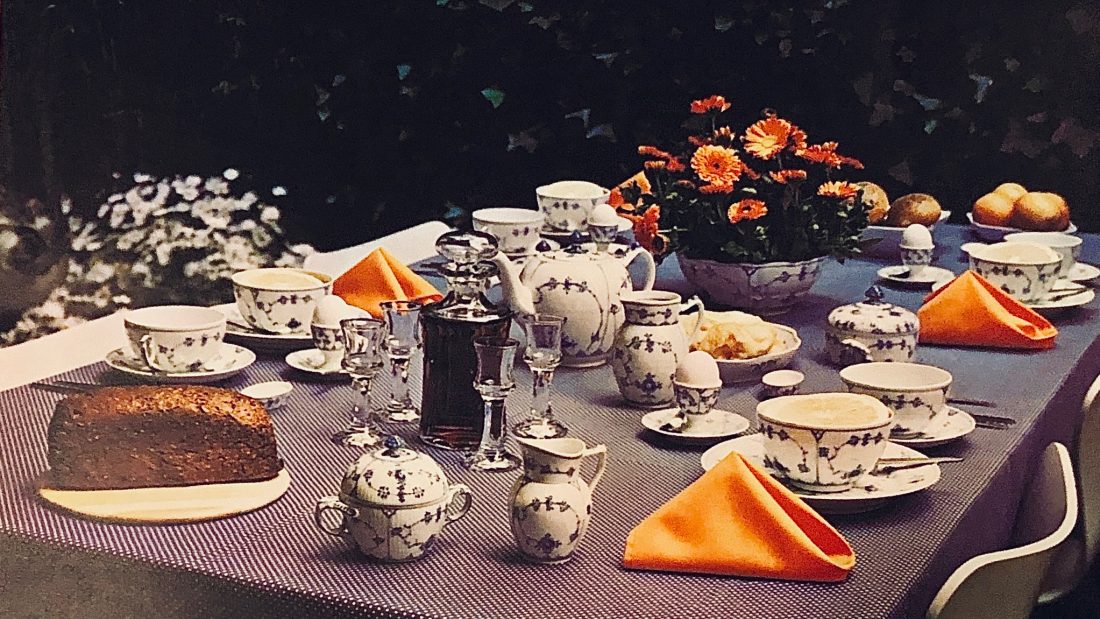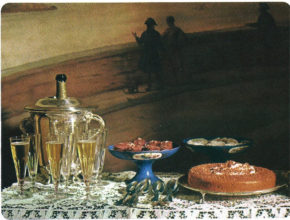Good morning! Well, it might not be morning, but since we’re going to discuss that first meal of the day, I give you the appropriate salutation.
Here we’re going to talk about Breakfast. I’m going to divide this into multiple parts because up until less than fifty years ago, a breakfast could mean the meal attended by family, an informal gathering that included invited guests and it could mean a formal meal served during a wedding, after a debut or as part of a hunt. Each had different purposes, times of day and ways of being served.
Let us first contemplate the family breakfast.
“In the homes of workers breakfast always comes at that all-too-brief period between waking and dashing off for the train to the city. It is the unusual commuter who rises early enough to spend much time at table in the morning. So, in some families, breakfast may be served to a son as early as five o’clock and to the last working member of the house to leave at nine o’clock. If that is the case, just when the first breakfaster is sitting down to his early meal, in a hotel downtown, an elaborate debut ball is ending with a breakfast and soon all this who eat there will be in be to sleep through the day.”
The New American Etiquette by Lily Haworth Wallace, (1941)
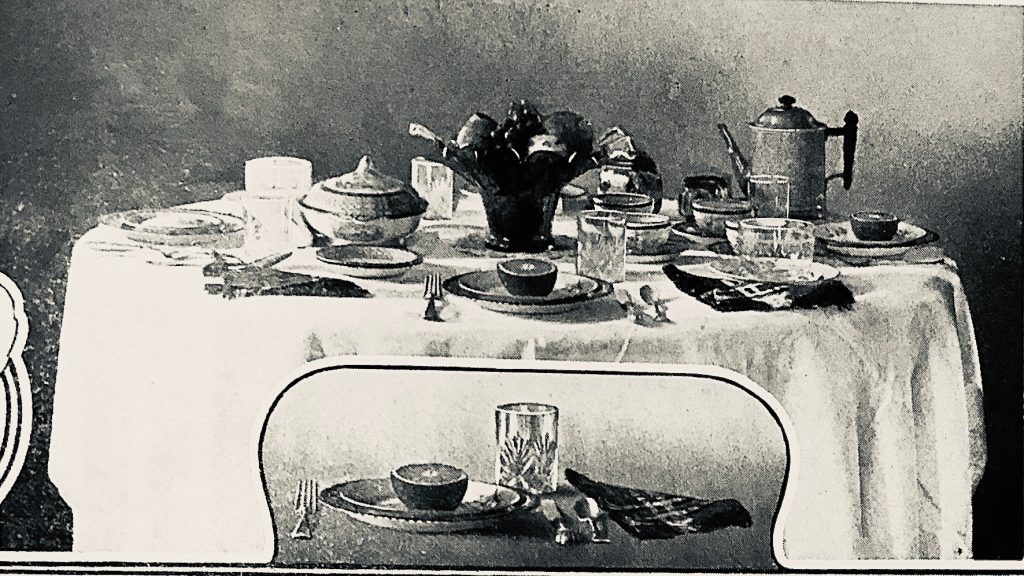
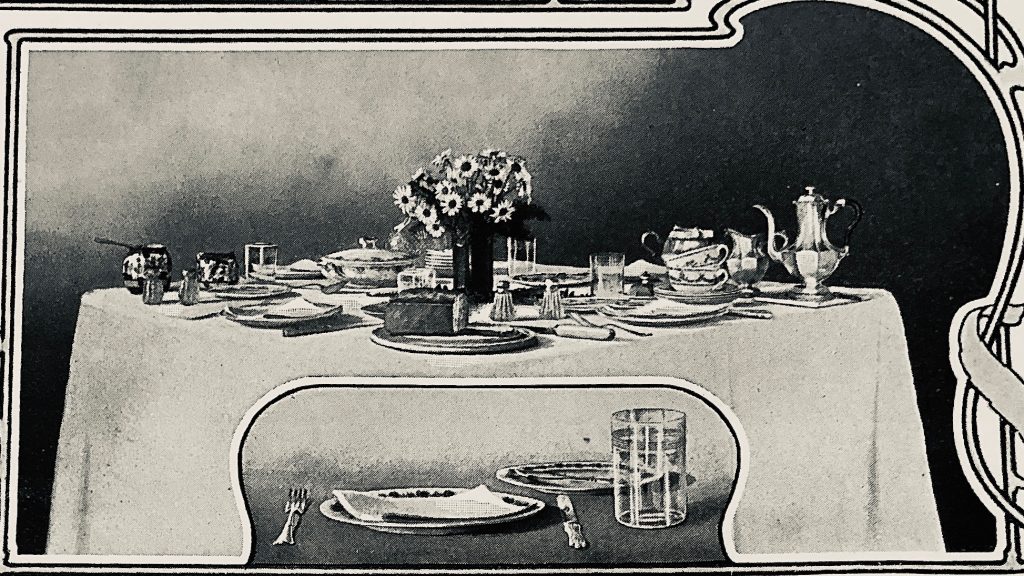
Outside of aristocratic circles, the family breakfast has always been an informal affair. Even in upper class houses in Britain during the Edwardian era, formality was loosened and breakfast was served buffet style, without servants waiting on the diners. It was also the only meal in which the lady of the house could take on a tray in her bedroom.
In America, where the newly rich were excited to live the life they imagined the very wealthy lived and using grand hotels as a benchmark for what great service should be like, breakfasters were more likely to have staff serve them breakfast or bring it to them on a tray. Still, personal service at breakfast was a rarity for most people. Breakfast was, and still is, the most relaxed meal as it was likely to only be your family and close relations around the table.
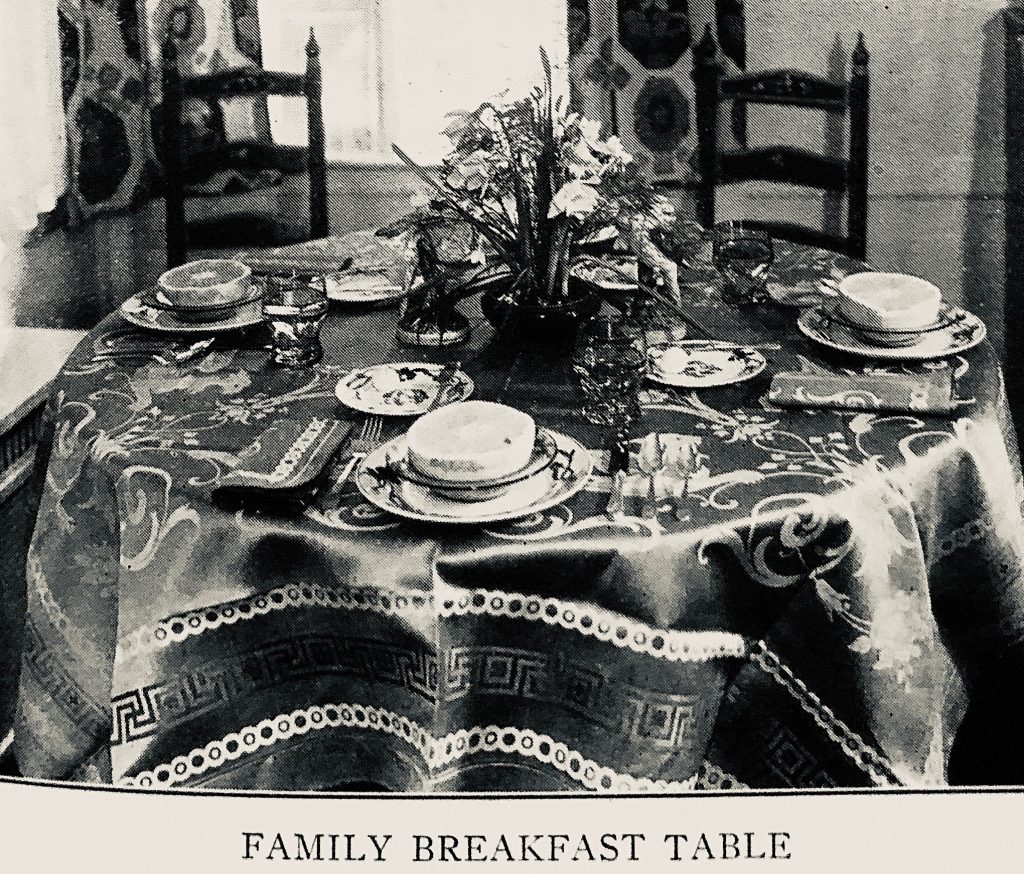
“The breakfast-table should be simply decorated, yet it may be made extremely attractive, with its snowy cloth and napkins, its array of glass, and its ornamentation of flowers and fruit. Queen Victoria has set the fashion of placing the whole loaf of bread upon the table with a knife by its side, leaving the bread to be cut as it is desired. However, the old style of having the bread already cut when it is placed upon the table will still recommend it self to many. In eating, bread must always be broken, never cut, and certainly not bitten. Fruit should be served in abundance at the breakfast-table whenever and wherever practicable.”
Ladies’ & Gentlemens’ Etiquette by Mrs. E. B. Duffey, (1877)
As you might surmise from the snowy cloth and napkins, this was instruction for the middle and upper classes. During the late 19th century, even a modest house might have a couple of servants, so having breakfast as a family was likely to be prepared by a cook and placed upon the table by a maid. A maid would have been useful in 1877 when at the height of the Victorian period, breakfast could contain, kidneys, eggs and bacon, cold meats, kedgeree, game pies, toast or American biscuits.
I don’t want to give you the impression that huge breakfasts were commonplace among all Victorians. Many Victorian’s rushed off to work with a breakfast of toast and eggs or a bowl of porridge. Cream of Wheat appeared on tables in 1893 and Cornflakes were invented in 1894, so some people were obviously looking for an alternative to heavy breakfasts as breakfast cereals, whether hot or cold, caught on quickly.

“This first repast of the day should always be daintily and appetizingly spread, and the etiquette there observed, as at all other meals of the day, should be of a nature to render the observance on more state occasions second nature to the members of the family, Children so trained will find little difficulty in after days as to their table etiquette.”
Social Etiquette by Maud C. Cooke, (1899)
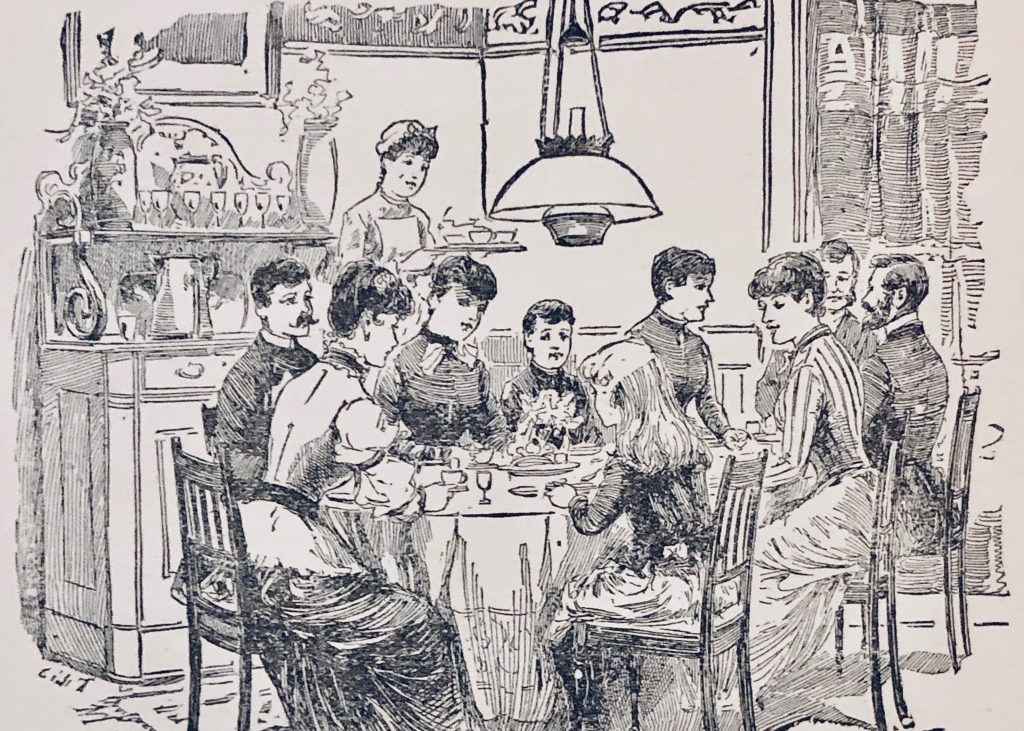
For the middle class, breakfast was a family affair with multiple generations likely present. It is only very recently in history that parents, children and grandparents stopped living together communally, even in the middle classes. As you probably gleaned from Maud Cooke in her passage above, breakfast was seen as a time when children could learn their manners by watching the adults. Etiquette manuals often encouraged parents to allow children to recount stories from their lives to teach them the art of conversation. Breakfast was family time, both to set a positive tone for the day, but also to serve as a educational experience.
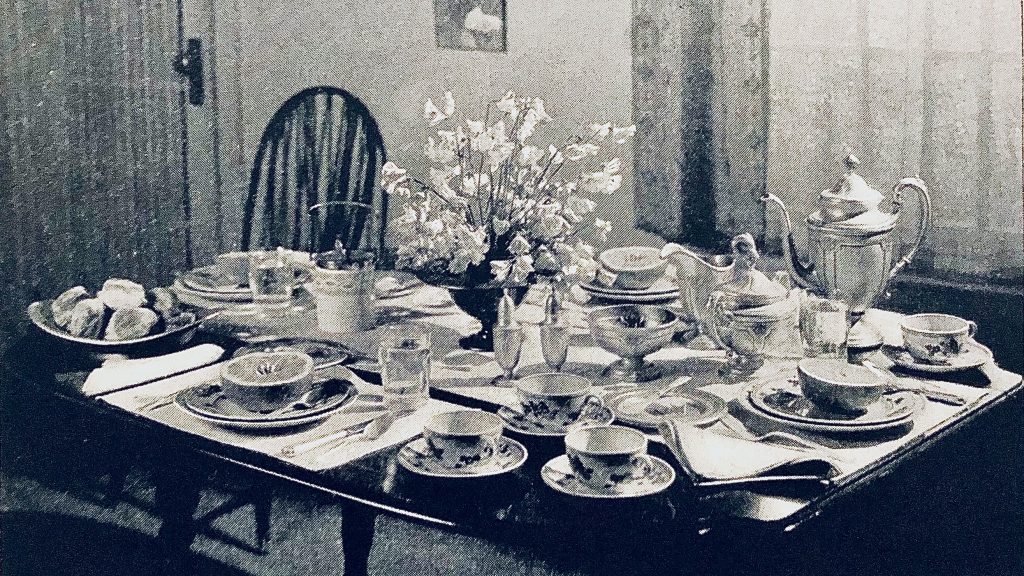
Families were encouraged to appear a breakfast happy and to maintain a good attitude. As from this passage in The New American Etiquette:
“People should wake up cheerful and breakfast should be serene and gay. Try to manage your household so that your husband enjoys his breakfast and wishes he could stay longer, even as you push him out of the door with a kiss on his way to the eight-fourteen.”
Rampant sexism aside, I can’t say that trying to make breakfast a cheerful meal is a bad thing.

During the late 19th century, breakfast dishes were sold at every price point and were affordable to even the lower classes. Sets such as the one above were very inexpensive and could be aspired to by most women. More elaborate sets were objects for the wealthy, with items like silver toast racks being out of reach for the average citizen.
In the 20’s electric appliances begin to make an appearance and were mass marketed to the housewife. At the forefront of these were the electric toaster, waffle-maker and coffee percolator. Ladies were encouraged to seat their family at the table and to make the coffee and toast to order. This coincided with the end of the first world war, where less and less people were willing to go into service and servants became scares. Housewives began having to cook breakfast for their families and these new fangled appliances probably seemed like a great liberation, allowing them out of the kitchen to sit with the family as the meal was prepared.
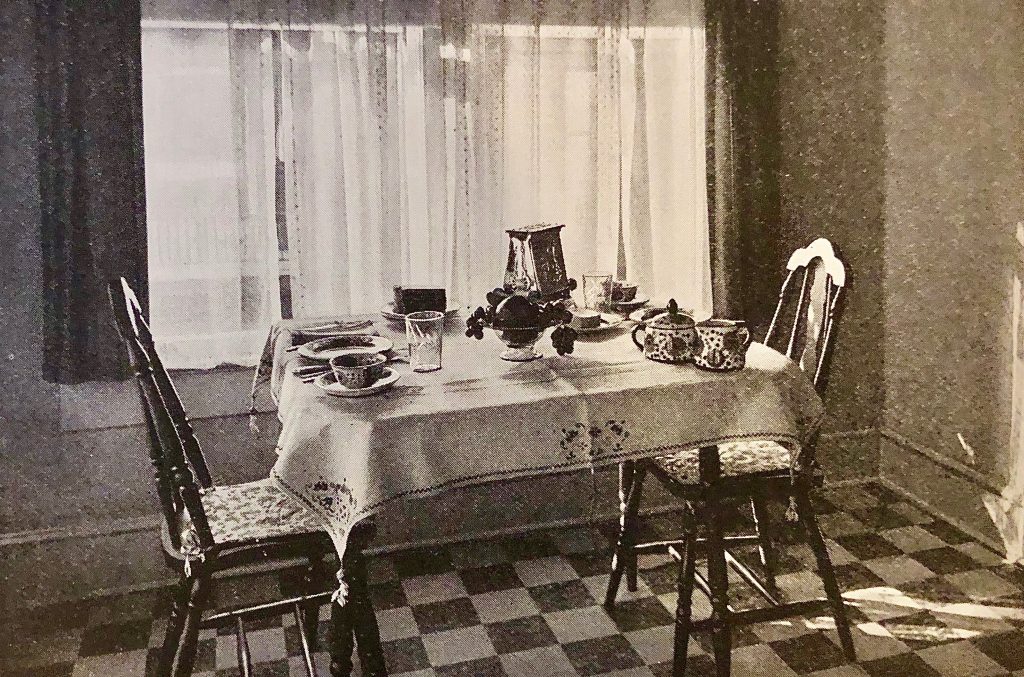
After WWII, during the 40’s in America and 50’s in Britain, the post war boom led to even greater consumerism. As a part of tableware manufacturer’s push for average women to buy their goods, nearly every company produced table guides that included separate sets for breakfast and included pictures of how a table should look. Even as breakfast became shorter, moved from the dining room to a cheerful breakfast nook or table in the kitchen, women were sold on the idea that breakfast was a very different meal from lunch or dinner and should have it’s own etiquette and service. Women were encouraged to have a dedicated breakfast china and to purchase items like silver-plated coffee pots and bone china toast racks.
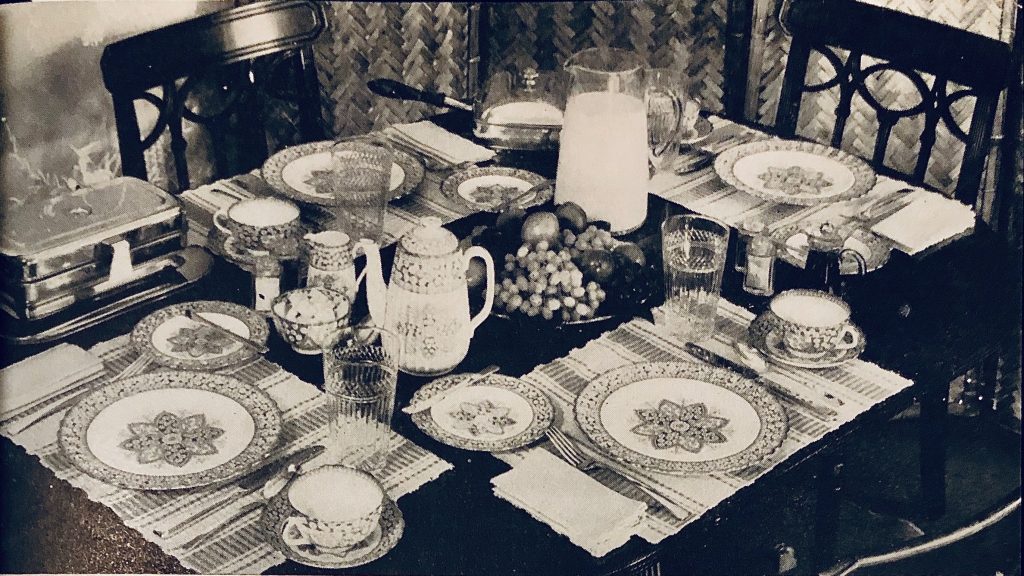
The late 50’s and 60’s brought us melamine and plastic dishes, so anyone could afford a set of breakfast dishes at any price point. Television shows like “Leave It To Beaver” showed the middle class, aspirational family breakfasting together, cementing the idea that this was the ideal. It’s an ideal that stuck well into the 1980’s, even if people didn’t practice it in reality.
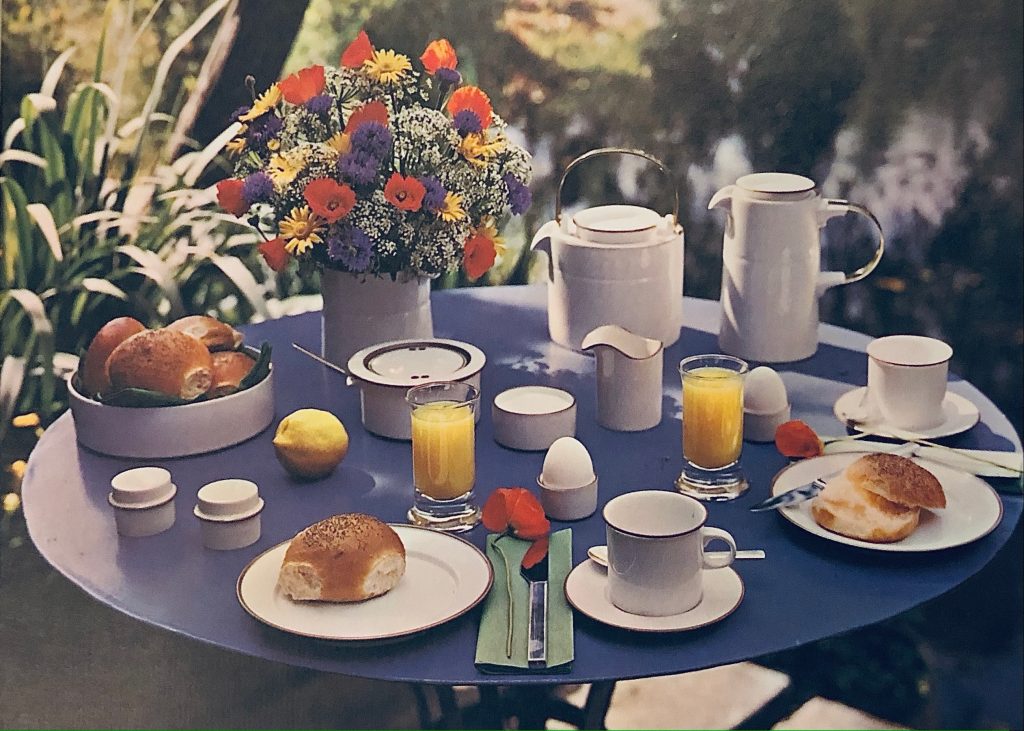
The seventies and eighties saw the rise of the fast breakfast. Sugar cereals for kids, fast food breakfasts on the go, both contributed to the waning interest in breakfast as a family meal. Add to that the yuppie 80’s emphasis on working long hours and more women working outside of the home and you see a decline in the family breakfast which continued until we were all forced to be in each others company 24 hours a day in 2020. I wonder if all this togetherness will cause an increase in the family breakfast.
Next we’ll look at “The Breakfast”, which is in some ways the precursor to Brunch. Mmmmm… delicious brunch.
I hope you’re all well and happy. Much love, Cheri
